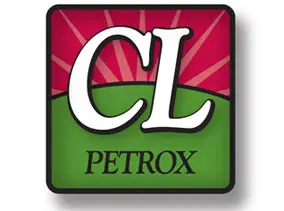
Petrox™ bioremediation of fuel, oil and grease
Fast, Reliable Results
Petrox contains a highly-concentrated consortium of multiple petroleum-degrading microbial strains. Extracted from natural sources and isolated under controlled laboratory conditions, these beneficial organisms degrade petroleum hydrocarbons, organic solvents, and semi-volatile hydrocarbons to convert them mainly into carbon dioxide and water.
- Click here to find out how microbes remediate petroleum spills.
- Click here for a cellular diagram of petroleum metabolism.
- Click here to download a summary of the range of hydrocarbon application case studies.
From Brown To Green Faster
Site closure often occurs in a matter of weeks or months versus several years or more for other methods, giving users the combined benefit of fast site closure and remarkable cost savings.
Standard and Custom Blends
Available in standard blend or custom formulations for specific needs, Petrox can be used as a highly effective stand-alone decontamination solution or as a powerful augmentation to speed the remediation of existing treatment systems.
Standard Petrox blends target BTEX compounds (Benzene, Toluene, Ethylbenzene, Xylene), Dioctylphthalate (common plasticizer), Fuels (gasoline, diesel and heating oils), Methyl Ethyl Ketone (MEK, 2-butanone), Methylene Chloride, Mineral spirits, Naphthalene, Stoddard solvents, Polycyclic Aromatic Hydrocarbons (PAHs) including benzo(a)pyrene, and trimethylbenzene isomers. Click here to download a summary of applications to petroleum products.
How Does Petroleum Bioremediation Work?
Custom Petrox blends target unusual contaminants for bioremediation, such as chromium, pesticides, and explosives.
How fast is it?
Petrox bioremediation begins as soon as the microbes contact the contamination. Contaminant removal rates have beeen observed at over 1.0 mg/L/day. Measurable field results may take time as the microbes and effect must migrate from the application location to the sampling location. The following chart shows remediation rates over 90% in less than 90 days.
Applications
- Commonly used at fuel terminals and gas stations, in the metals and chemicals industries, citrus production, railroads, manufactured gas plants, and wood treatment facilities.
- Designed for stand-alone application or for augmentation of existing treatments, including vapor stripping, sparging, excavation, and dual-phase extractions technologies.
Each Petrox product batch is manufactured under sterile conditions, and subjected to stringent quality control protocols before release for shipment. Available as a freeze-dried powder and hydrated on site for the highest possible microbial activity, each culture is provided with unique nutrient/growth factor formulation to maximize viable cell count.
Environmental Conditions for Treatment
| Parameter | Effective Range | Optimum Range |
| PH | 4.5-9.5 | 6.0-8.0 |
| Temperature | 32-105ºF | 55-90ºF |
| Salinity | 0-5% | <5% |
| Dissolved Oxygen | >0.0ppm | 1-8ppm |
Petrox: Demonstrated Remediation Rates
| Contaminant | Initial Concentration (ppm) | Final Concentration (ppm) | Test Period (hours) | Percent Reduction | Degradation Rate (mg/L/hr at 1E06 CFU/ml) |
| Fuel Oil in Water | 2,000 | 1,400 | 40 | 30% | 15 |
| Fuel Oil in Sand | 2,000 | 1,400 | 240 | 30% | 2.5 |
| Ethyl Benzene | 3 | 0 | 168 | 100% | 0.02 |
| Xylene | 3.6 | 0.4 | 168 | 89% | 0.02 |
| Toluene | 99 | 15 | 168 | 85% | 0.5 |
| Methyl Ethyl Ketone | 21 | 4 | 168 | 81% | 0.1 |
| Phenol | 90 | 0 | 48 | 100% | 1.9 |
| Methylene Chloride | 15 | 0 | 168 | 100% | 0.09 |
| Pentachlorophenol | 50 | 32 | 84 | 35% | 0.21 |
| Dioctylphthalate | 100 | 70 | 120 | 30% | 0.25 |


